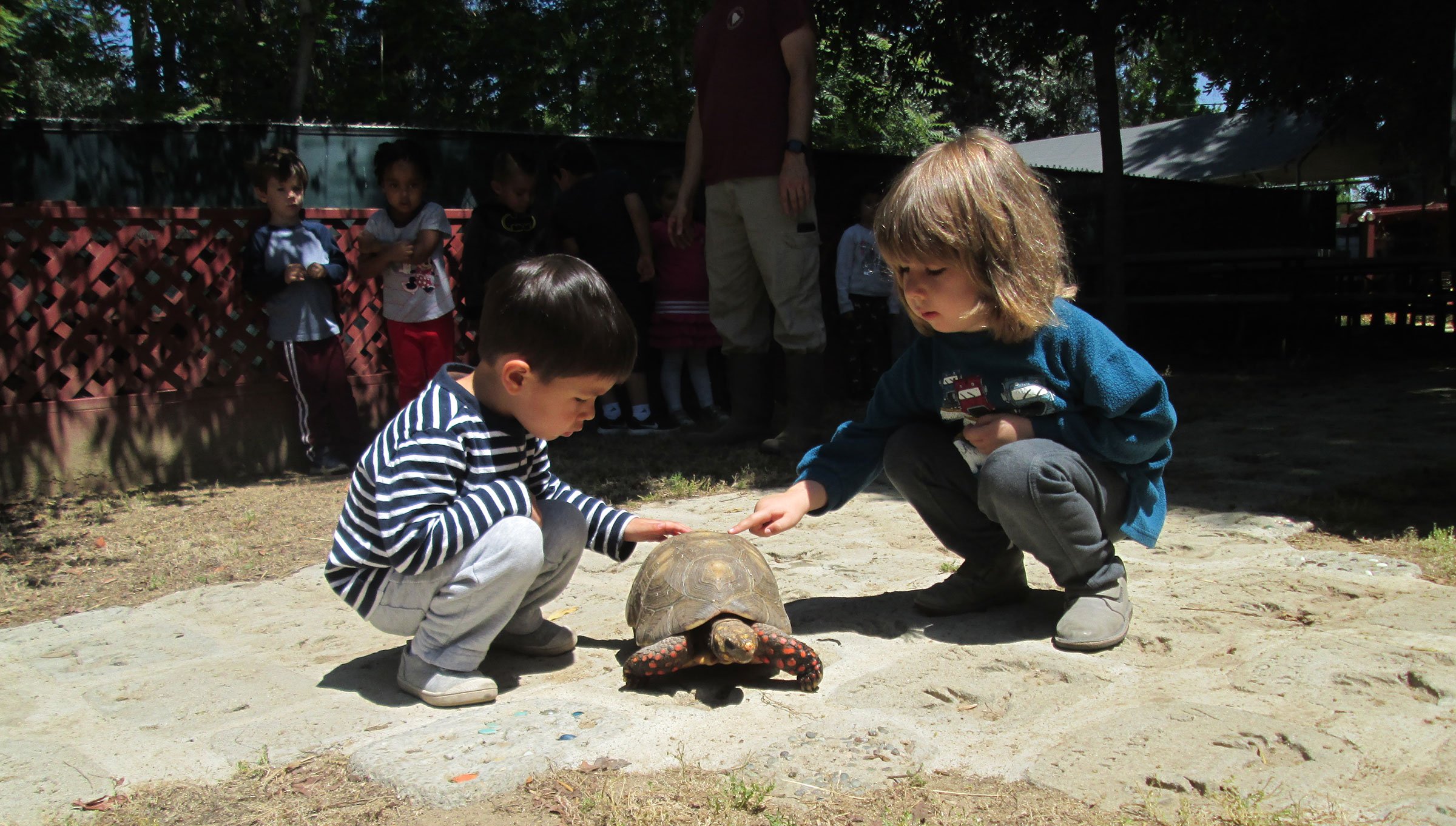
Animal & Nature Studies
Curriculum Overview
Animal & Nature Studies — Curriculum Overview (TK–5)
Hands-on science, animal care, and environmental learning that nurture curiosity, empathy, and scientific thinking. Each year builds in sophistication—moving from safe animal interactions to complex ecological systems, genetics, and evolution.
TK — Discovering the Animal Kingdom
Theme: Animal Traits & Safety – noticing body language (ears, tails, posture) and how traits like teeth, wings, or claws help animals survive.
Main Areas of Study: Differences between animal classes (mammals, reptiles, birds), safe interactions with large animals, and early observation of behaviors.
- Animal Safety
- Animal Identification
- Seasonal Changes
- Animal Behavior
- Mammals, Reptiles, Birds
- Parts of a Plant
- Veterinary Care
Kindergarten — Animal Care 101: Guardians of the Barnyard
Theme: The basics of animal husbandry—feeding, cleaning, observing—and what animals need to stay healthy.
Main Areas of Study: Daily care routines, nutrition, comparative anatomy, and the design of animal habitats that meet basic needs.
- Animal Safety
- Animal Identification
- Animal & Human Nutrition
- Comparative Anatomy
- Habitats & Seasonal Needs
- Veterinary Care
- Native Animals
Grade 1 — Ecology 101: Web of Life
Theme: Predators, prey, and simple food chains that keep ecosystems in balance.
Main Areas of Study: Interdependent relationships between plants and animals, early ecology, and the foundations of conservation and care.
- Animal Safety & Identification
- Comparative Anatomy
- Ecology & Conservation
- Plant & Animal Needs
- Habitats
- Behavior & Communication
- Plant Care, Pollinators & Harvesting
The Upper Elementary Animal & Nature Studies program operates on a two-year learning cycle that invites students to dive deeply into complex scientific ideas. Through a thoughtfully sequenced curriculum, students explore topics—like evolution, genetics, and ecological interdependence—often reserved for middle and high school, in ways that are engaging, hands-on, and developmentally appropriate.
Grades 2–3 — Evolution & Genetics 101: Traits & Transformations (Year A)
Theme: An introduction to natural selection and the big ideas of evolution—why living things look and behave the way they do.
Main Areas of Study: Inheritance, variation of traits, and how species evolve and adapt to their environment over time.
- Genetics & Heritability
- Phenotype & Genotype
- Phenotypic Plasticity
- Mendelian Inheritance
- Natural vs. Artificial Selection
- Hybrid Adaptations & Convergence
- Fossils & Emergence of New Species
Grades 2–3 — Animal Care 201: Advanced Animal Studies (Year B)
Theme: Building on Animal Care 101—advanced care practices, behavior, and applied animal science.
Main Areas of Study: Comparative anatomy, enrichment design, communication, and adaptations across species.
- Animal Safety & Identification
- Advanced Care Practices (feeding, habitat design, enrichment)
- Comparative Anatomy
- Animal Behavior & Communication
- Adaptations to Environment
- Fossils & Extinct Animals
- Human Impact on Animals
Grades 4–5 — Evolution & Genetics 201: The Story of Survival (Year A)
Theme: A deeper look at natural selection and how life adapts—connecting genetics to survival strategies across species.
Main Areas of Study: Advanced genetics, adaptation, survival, and how organisms change and persist through time.
- Evolution & Survival Mechanisms
- Natural vs. Artificial Selection
- Genetics & Heritability
- Phenotype & Genotype
- Phenotypic Plasticity
- Mendelian Inheritance
- Hybrid Adaptations & Convergence
- Fossils & the Emergence of New Species
- Intelligence & Adaptation in Species
Grades 4–5 — Ecology 201: Interdependence & Ecosystems (Year B)
Theme: Complex ecosystems and interdependence—how organisms coexist, adapt, and keep Earth’s systems in balance.
Main Areas of Study: Energy flow, population dynamics, migration, and human impact on environments.
- Ecology & Ecosystem Dynamics
- Food Webs & Biomes
- Population Growth & Carrying Capacity
- Animal Interactions & Group Living
- Migration, Locomotion, Defense Mechanisms
- Adaptations for Vision & Senses
- Animal Learning & Training
- Plant Identification & Native Plants
- Photosynthesis & Fungi
- Pollinators & Plant Care
Each unit builds conceptual understanding and executive function skills—moving from hands-on observation in early grades to systems thinking, data analysis, and stewardship in upper elementary.

